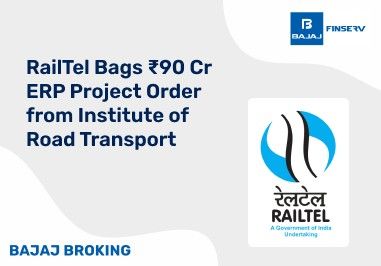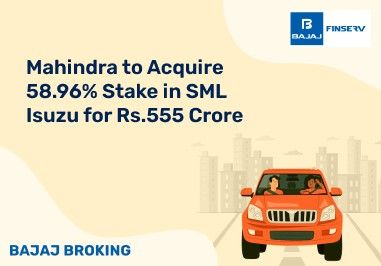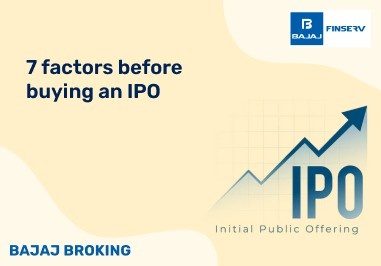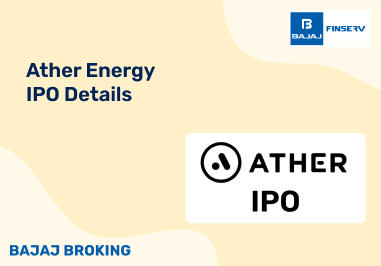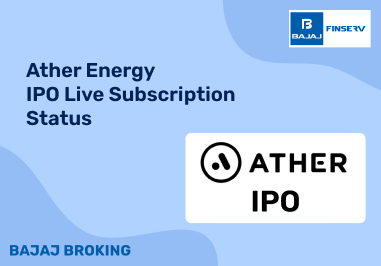The horizon of the stock market is typically known for being volatile and ever-changing, one thing that remains constant is the investor's need to place an order in the right window. The way investors choose to place their orders impacts their investment strategies greatly. Therefore understanding the differences between the types of order options available becomes crucial. An order in the stock market is an instruction given to the broking platform to purchase, sell, or transfer a security on your behalf. This makes an order a crucial element for trading.
Imagine that your investment portfolio features certain securities or shares that need to be sold before their value reaches a certain price point. Now, for this, do you have to analyse the market constantly? No, you can just enable a stop-loss order that authorises an automatic security sell if it reaches a certain price level, thus protecting you from potential losses.
Similarly, there is a wide array of orders like limit orders, automated orders, margin orders etc that can help you build a better investment portfolio. Let’s break down the different types of order options that you must be aware of.
Market Order
A market order is a straightforward type of order where you instruct the brokerage platform to buy or sell a security as soon as it reaches the best available price. Under this type of order, trading play takes place at the next available best price, but this price is not predetermined.
Traders who prefer execution speed over price precision are typically tilted towards placing market orders. The two key features of a market order and immediate execution.
Limit Order
A limit order is one where you instruct the broker to place an order either for buying or selling of a security at a certain specific price or a better price. This type of order differs from a market order as in the latter specific price point is not determined, whereas in the limit order specific price point is predetermined. Remember that once you have placed a limit order, it is in effect only till the time the order is executed or cancelled.
Here’s what you need to know about limit order
If it is a buy-limit order then the order gets executed only when the limit price reaches a lower price.
If it is a sell limit order then the order is executed only at the limit price or at a higher price.
Stop-Loss Order
Stop-Loss order is a popular choice for investors to limit their losses and mitigate through risk. Under this type of order an instruction is provided to the broker to automate the sale of security in case the price falls below a certain predetermined level. Simply put, once you have placed a stop loss order and the stock price either reaches or falls below the stop price, a sell order for your stock is automatically placed.
There are different types of stop-loss orders:
Stoploss order
Stop limit order
Trailing stop loss
Robo Order
A robo-border is a widely popular choice used by investors in intraday trading. This type of order allows you to place multiple orders in addition to the initial order. You can place a robot order to execute a transaction at a specific price level for profits or minimise loss, according to the market conditions.
Here’s an example to simplify robo-orders for you.
Imagine that you want to trade shares of a company that is currently trading at ₹ 500. Now, for a robo order, you have to put certain conditions like a buy order execution for ₹ 495, stop loss at ₹ 490 and a target price at ₹ 510. Since you have placed the robo order, a transaction will be executed only when these are met.
Delivery (Also Known as Cash & Carry or CBC)
A delivery or cash and carry order is a type of order where you buy shares by paying up front and the shares are credited to your demat account. Now, once you have the shares in your demat account it is up to you when you decide to sell or transfer them.
This type of order functions differently than intraday trading where orders are placed on the same day. For a better understanding, here’s a breakdown of the key features of delivery or cash and carry order:
You purchased security by paying upfront.
You’re not under an obligation to sell or transfer on the same day.
Shares are credited to your demat account – providing you ownership of shares.
Margin
Margin orders have become widely popular in recent decades as it allows you to buy high-value stocks without having to pay the whole amount.
Simply put, through margin orders you can place an order with a fraction (minimum margin requirement) of the total amount and the rest is funded by your broking platform or any other short-term loan provider.
Remember that margin orders are not allowed for every type of security, and only a few broking platforms allow you to place margin orders.
Intraday
As the name suggests, an intra-day order is a type of order where you buy and sell securities within the same trading day. This means that you purchase a security and then sell it on the same trading day to benefit from the market conditions.
Remember that if you fail to close the intraday open position, an automatic square of a few stocks is performed before the market closes. Make sure to check the updated trading timings and square of time.
Immediate or Cancel (IOC) Order
Immediate or cancel order allows you to give instructions to the brokerage platform to place an immediate execution of an order for buying or selling securities at the best available price.
Know that there are two aspects of this type of order: immediate execution and automatic cancellation.
What makes this type of order different from regular market orders is that it is executed immediately or is cancelled from the system.
Day Order
The data order is slightly similar to intraday order. The type of order gets executed at any time during the trading hours, as soon as the desired option is available.
Let’s take a simple example to understand day order better.
Imagine that you have placed a day order to purchase 200 shares of a certain company for a price of ₹ 20 per share. Nowthe day order gets executed as soon as 200 shares of the company are available at ₹ 20 per share. Additionally, as it is a day order it has to be executed on the same day or the order gets cancelled.
Good Till Triggered (GTT) Order
Good till triggered order or GTT order is used to execute a transaction as soon as a certain price condition is met. Under this type of order, a specific price condition is predetermined by you and once it is met the order is executed automatically. Remember that unlike many other types of order GTT orders do not persist post the execution.
To place a good till triggered order you need to know that there are two price points that you have to decide:
Let’s take a simple example to understand these price points better.
Imagine that you want to buy 200 shares of a certain company at ₹ 2300 per share. At the current market condition, the shares of the company are trading at ₹ 2400. Now since you have placed a GTT order, the transaction is executed either at the trigger price price which is ₹ 2300 or the limit price which is ₹2290 which is the maximum price of willing to buy shares of the company.
After Market Order
As the name suggests, an aftermarket order or AMO allows you to execute a trade during non-market hours. After-market order is executed either before or after trading hours based on a predetermined price level.
Conclusion
The stock market allows different types of orders to ensure a seamless transaction, whether it is for buying, selling and transferring. While there are options available, make sure to execute an order that aligns with your investment goals and risk appetite.
To begin your trading journey, choosing a reliable broking platform becomes vital. Relying on a broking platform that allows easy order executions can help you easily implement investment strategies.




